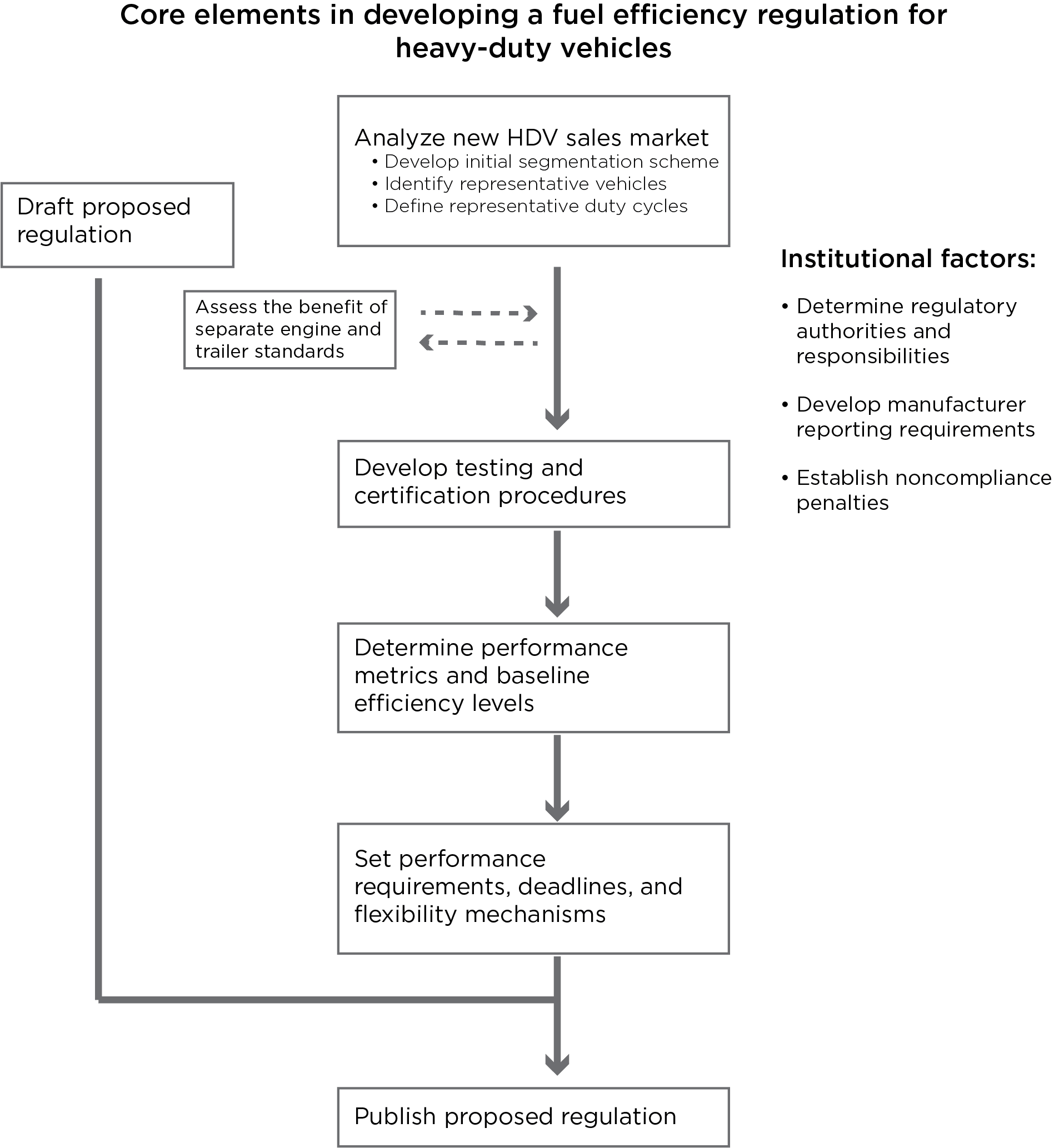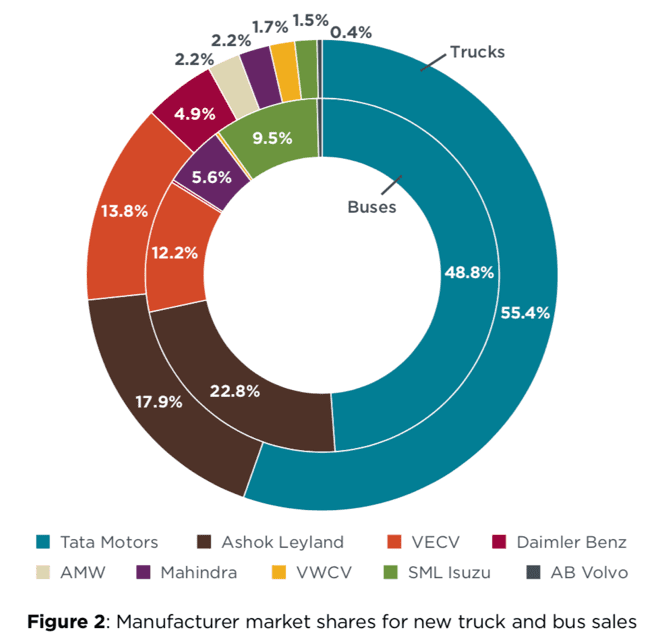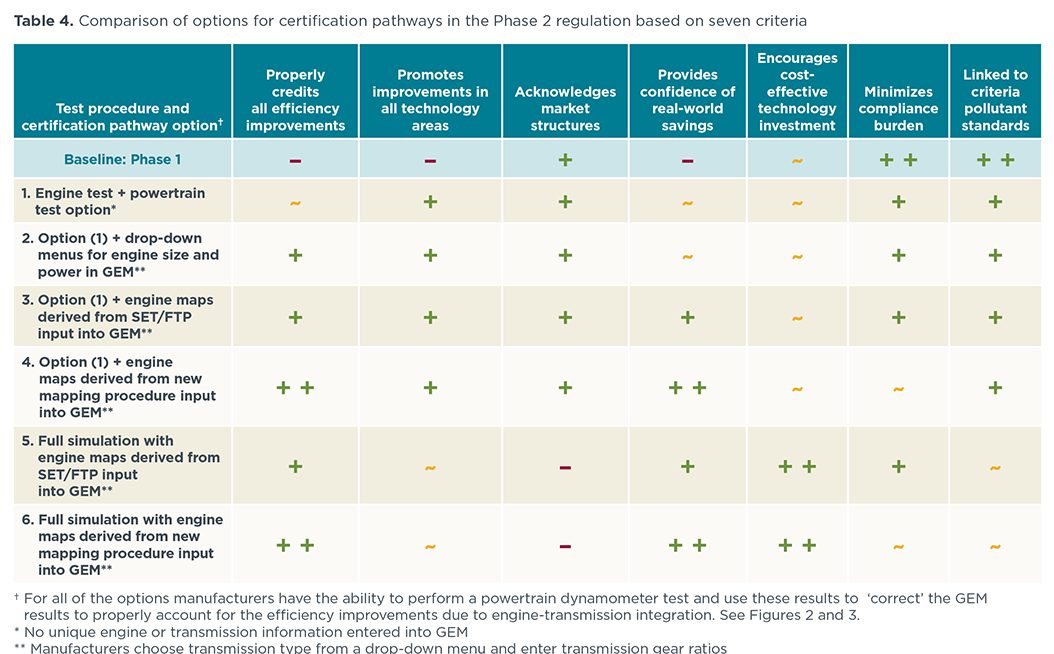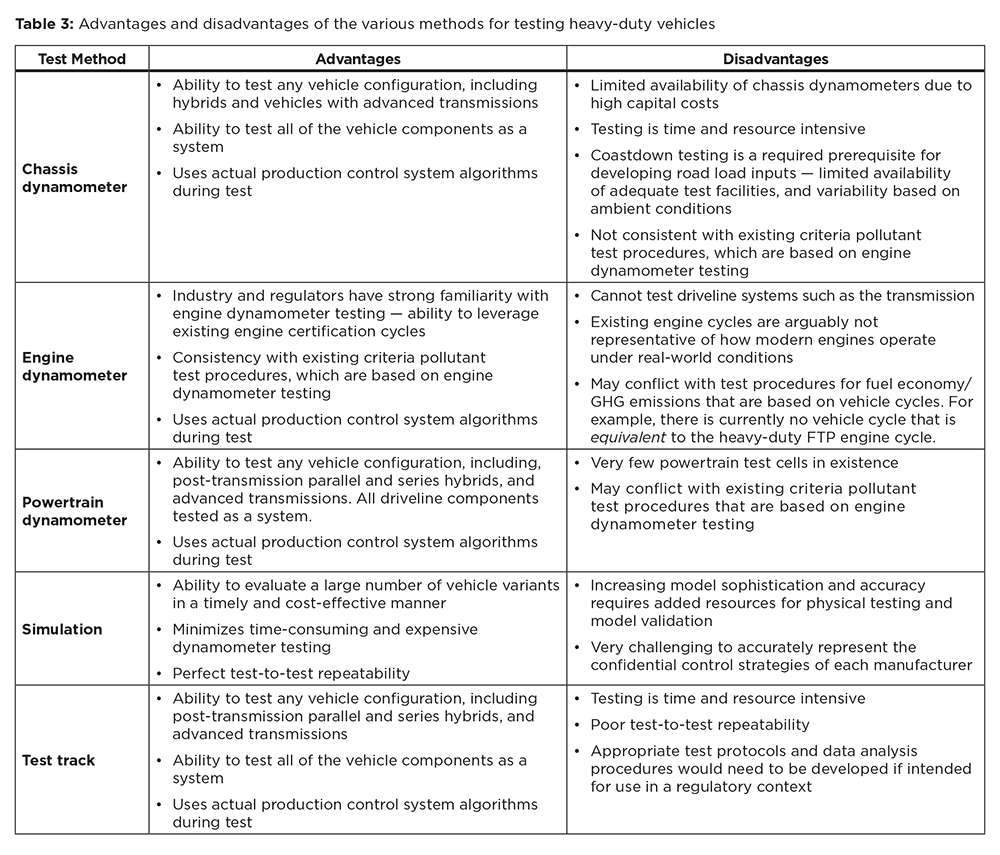STACKS
A stepwise guide to heavy-duty vehicle efficiency standards
- Overview of the regulatory development process
- Market segmentation and duty cycles
- Assess the benefit of separate engine and trailer standards
- Develop testing and certification procedures
- Determine performance metrics and baseline efficiency levels
- Set performance requirements, deadlines, and flexibility mechanisms
- Drafting, revising, and finalizing the regulation
Heavy trucks and buses—”heavy” meaning a gross vehicle weight more than 3,500 kilograms—account for about 40% of the energy consumption of the global on-road vehicle fleet. In and of itself that makes these vehicles a good target for energy efficiency regulation. Fuel consumption/fuel economy standards and greenhouse gas (GHG) emission limits for new heavy-duty vehicles (HDVs) can also complement other approaches to reducing energy use and carbon emissions in the transportation sector.
Compared to light-duty vehicles, devising efficiency regulations for HDVs is a bigger challenge, because the significant variation in vehicle types, sizes, configurations, mission profiles, and duty cycles creates difficulties in designing test procedures and evaluating performance. But it’s not an insurmountable one.
This card stack briefly lays out the core elements in formulating and implementing an efficiency regulation for heavy-duty vehicles.




